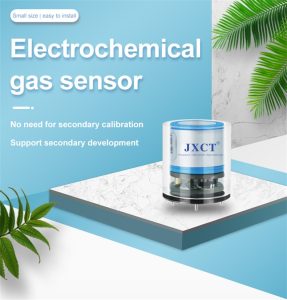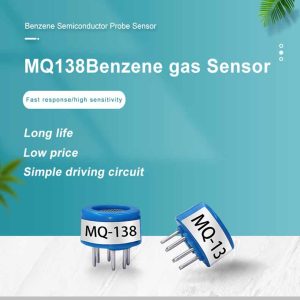In recent years, pollution has become a global concern, posing significant threats to human health, the environment, and ecosystems. To address this issue effectively, advanced technologies are being developed, and gas sensors have emerged as crucial tools for pollution control. Gas sensors play a vital role in detecting and monitoring various pollutants, enabling better understanding and management of pollution sources. This article explores the future of pollution control with a focus on gas sensors and their wide-ranging applications.

Importance of Pollution Control:
Effective pollution control is essential to safeguarding human health and preserving the environment. Pollutants such as carbon monoxide (CO), nitrogen dioxide (NO2), sulfur dioxide (SO2), volatile organic compounds (VOCs), and particulate matter (PM) are known to have detrimental effects on air quality and human well-being. By detecting and monitoring these pollutants, gas sensors help in identifying pollution sources, assessing exposure risks, and formulating mitigation strategies.
Advanced Gas Sensor Technologies:
Gas sensors employ various technologies to detect and measure different types of pollutants. These technologies include electrochemical, semiconductor, optical, and nanomaterial-based sensors. Advancements in sensor design and manufacturing have led to increased sensitivity, selectivity, and reliability, making gas sensors suitable for a wide range of applications in pollution control.
Air Quality Monitoring:
One of the primary applications of gas sensors is air quality monitoring. Gas sensors can be deployed in fixed or mobile monitoring stations to assess pollutant levels in different locations over time. Real-time data collected through these sensors helps in identifying pollution hotspots, evaluating the effectiveness of pollution control measures, and implementing targeted interventions to improve air quality.
Indoor Air Quality:
Indoor air quality (IAQ) is another significant concern, as people spend a significant amount of time indoors. Gas sensors enable continuous monitoring of indoor environments to detect harmful gases and pollutants, such as carbon dioxide (CO2), volatile organic compounds (VOCs), and formaldehyde. By monitoring IAQ, gas sensors contribute to creating healthier workplaces, schools, residences, and public buildings.

Industrial Emissions Monitoring:
Industrial activities are often major sources of pollution. Regulatory bodies worldwide impose emissions standards on industries to control their impact on the environment. Gas sensors play a critical role in monitoring and controlling industrial emissions. By detecting pollutants released during manufacturing processes, gas sensors help industries ensure compliance with regulations, minimize emissions, and optimize pollution control measures.
Environmental Monitoring:
Gas sensors are invaluable tools for environmental monitoring. They can be deployed in natural ecosystems, water bodies, and sensitive areas to detect pollution sources, measure pollutant levels, and assess environmental health. Gas sensors enable researchers and environmental agencies to understand the impact of pollution on ecosystems, track pollution trends over time, and develop conservation strategies accordingly.
Personal Exposure Monitoring:
Gas sensors have the potential to revolutionize personal exposure monitoring, enabling individuals to assess their own exposure to pollutants in real-time. Personal exposure monitoring devices equipped with gas sensors can provide users with information about their immediate environment, empowering them to make informed decisions and take necessary precautions to reduce exposure risks.
Integration with Internet of Things (IoT) and Big Data:
The future of pollution control lies in the integration of gas sensors with IoT and big data analytics. By connecting gas sensors to networks, data can be collected, analyzed, and shared in real-time. This integration allows for efficient pollution monitoring and management on a large scale, facilitating prompt response to pollution events, targeted interventions, and evidence-based policy decisions.
Conclusion:
Gas sensors have emerged as indispensable tools in pollution control, offering numerous applications across various sectors. These sensors enable the detection, monitoring, and analysis of pollutants, contributing to improved air quality, safer indoor environments, better industrial emissions control, and enhanced environmental conservation efforts. As technology advances, gas sensors will continue to play a crucial role in shaping the future of pollution control. The integration of gas sensors with IoT and big data analytics holds immense potential for more efficient and effective pollution management strategies. By harnessing the power of gas sensors and adopting proactive pollution control measures, we can work towards a cleaner, healthier, and more sustainable future for generations to come.
 : +86 155 8830 2704
: +86 155 8830 2704 : jxdziot@gmail.com
: jxdziot@gmail.com
